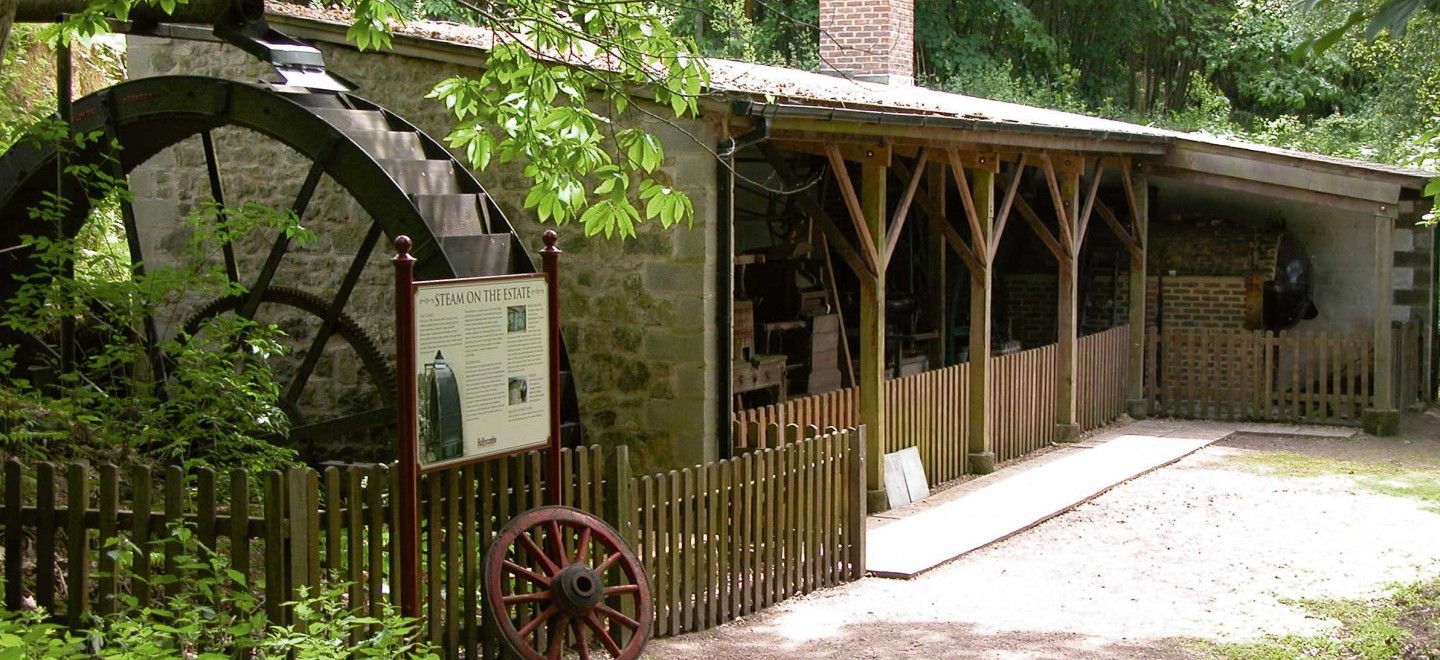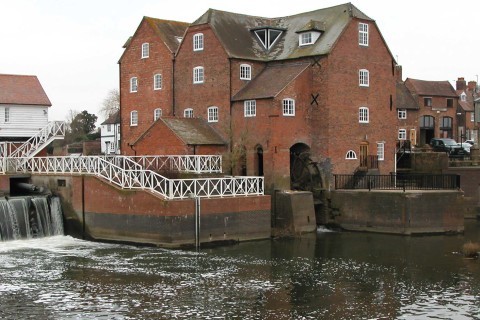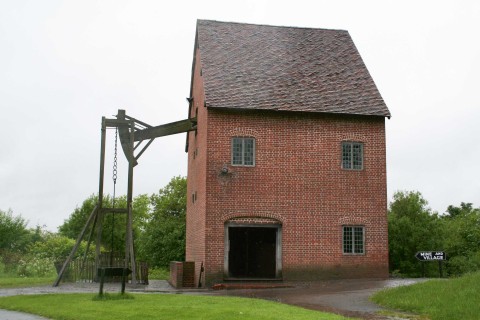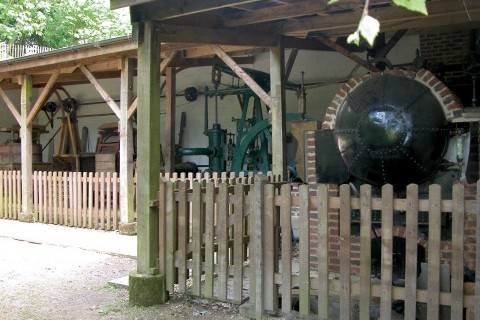Waterwheel
Waterwheels have been in use to provide power for thousands of years, albeit it a simpler form to those still in use today. There were an early form of ‘green’ energy. Waterwheels were used for all sorts of applications, the most common being to grind corn for flour or animal feed, or flints for pottery.
‘Overshot’ wheels are fed with water at
the top, ‘breastshot’ were fed half way
up the back and ‘undershot’ by the wheel
running with its lower section in a stream
or river.
Little is known about the history of Hollycombe’s ‘overshot’ wheel, other than it came from a farm in nearby Bramshott, having moved there at some time from Cornwall.
The example pictured is an undershot waterwheel as seen at Tewkesbury.




